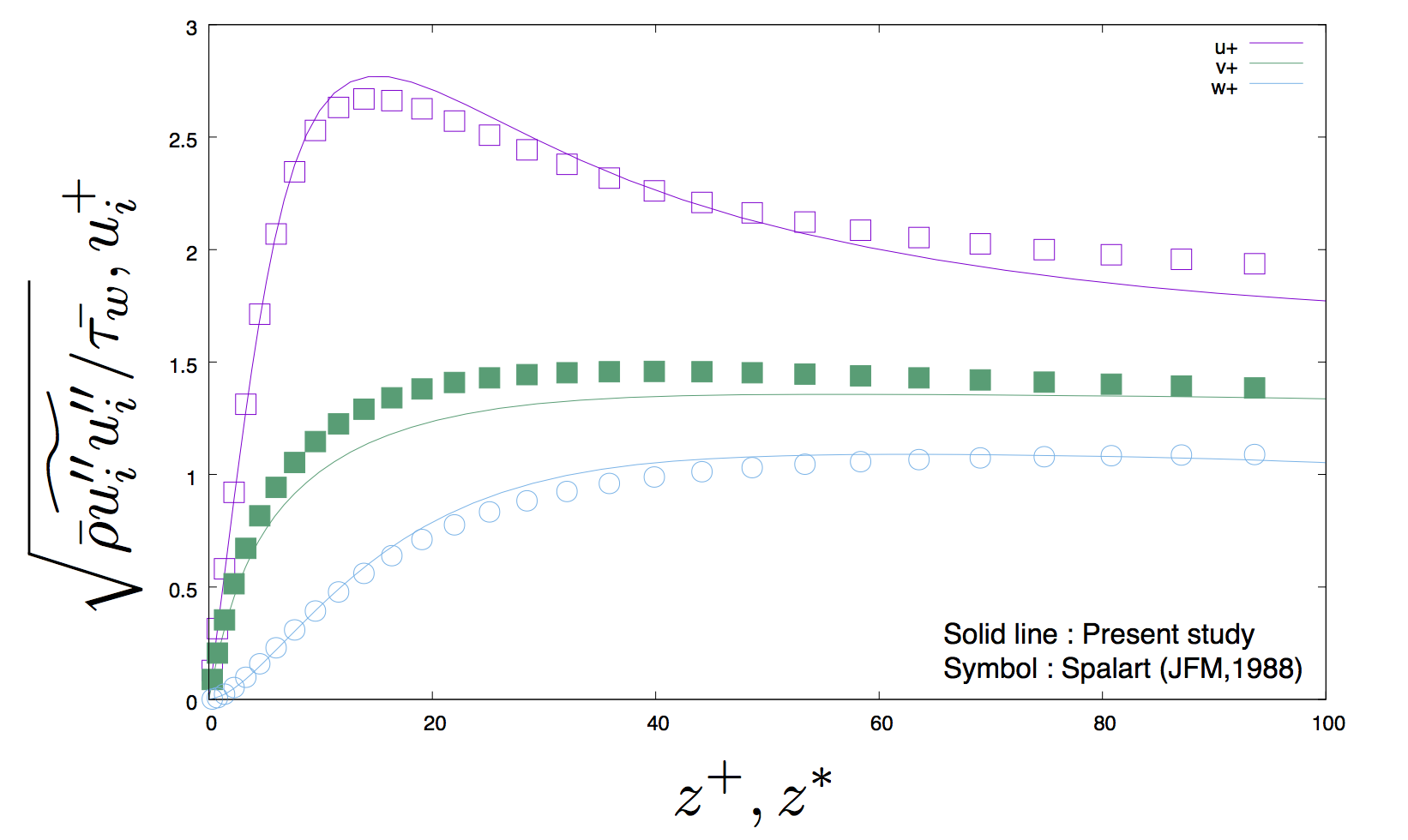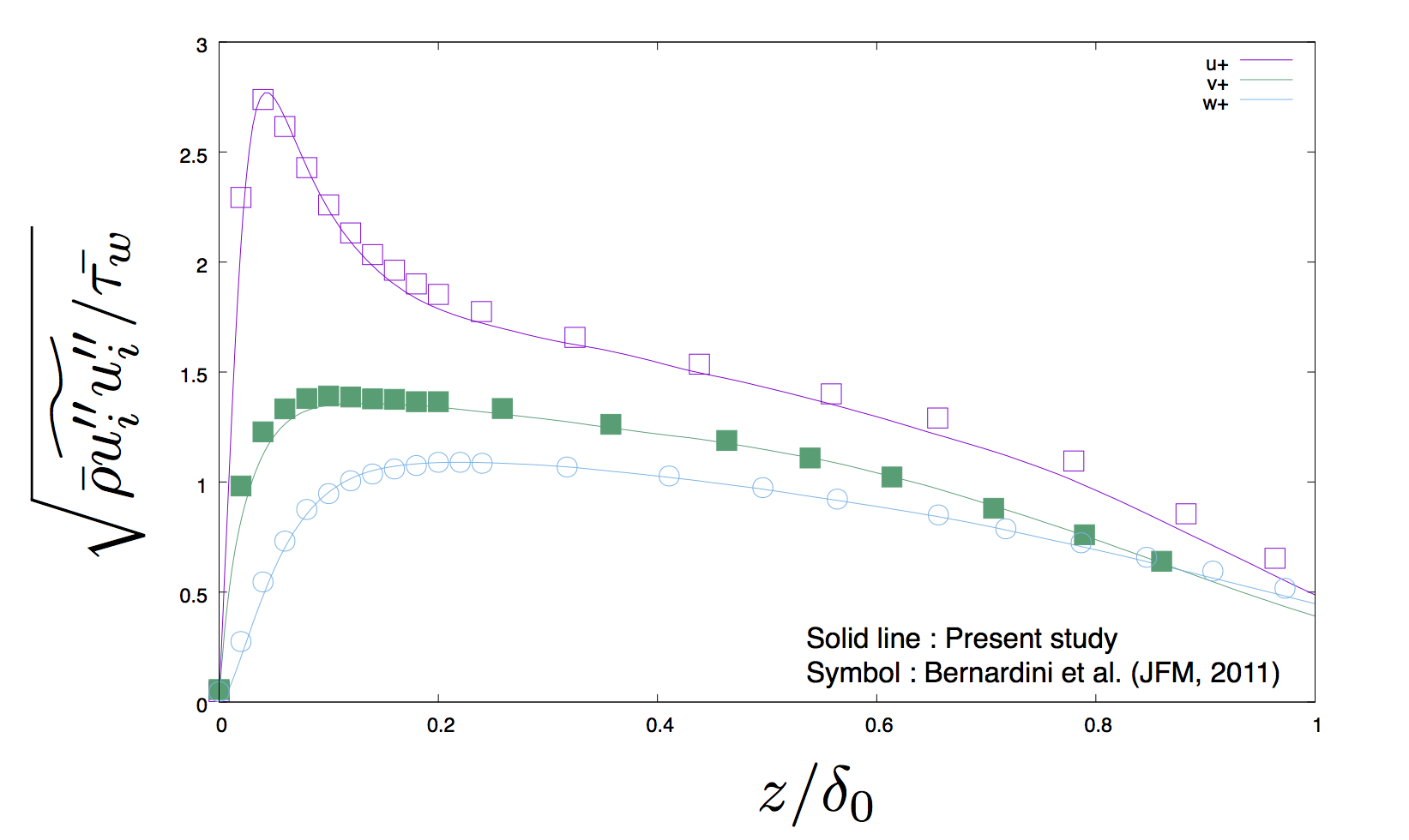Study of compressible thermal turbulent boundary layer
JAXA Supercomputer System Annual Report April 2017-March 2018
Report Number: R17EACA31
Subject Category: JSS2 Inter-University Research
- Responsible Representative: Soshi Kawai, Department of Aerospace Enginerring, Tohoku University
- Contact Information: Kosuke Totani totani@cfd.mech.tohoku.ac.jp
- Members: Soshi Kawai, Kosuke Totani
Abstract
The aim of this study is to numerically investigate the physics of compressible thermal turbulent boundary layer, and direct numerical simulations (DNS) are performed. The understanding from the DNS analysis will be utilized for building a wall model of large-eddy simulation for high Reynolds number flows.
Reference URL
N/A
Reasons for using JSS2
High-fidelity simulations of compressible turbulent flow need huge computational cost. Consequently, massively parallel computations with a supercomputer are required.
Achievements of the Year
A wall heat flux is one of the most important design parameters for thermal fluid devices. However, the physics of compressible thermal turbulent boundary layer hasn’t been investigated in detail. A Wall Modeled LES (WMLES) is an effective approach for a real scale unsteady flow simulation. However the predictive capability of WMLES hasn’t been validated on thermal flow fields.
For a numerical analysis of a wall-bounded compressible turbulent boundary layer with strong wall heat fluxes, we firstly simulated an adiabatic-wall boundary layer. The DNS code has been verified against a reference of turbulent boundary layer flow (Fig. 1, 2). In addition, we developed a high-order-accurate physically-consistent kinetic energy conservation scheme on curvilinear grids, based on the approach of Kuya and Kawai (2018). Next year we intend to simulate isothermal-wall boundary layers using the scheme.
Publications
N/A
Usage of JSS2
Computational Information
- Process Parallelization Methods: MPI
- Thread Parallelization Methods: OpenMP
- Number of Processes: 384 – 512
- Elapsed Time per Case: 210.00 hours
Resources Used
Fraction of Usage in Total Resources*1(%): 0.09
Details
Please refer to System Configuration of JSS2 for the system configuration and major specifications of JSS2.
| System Name | Amount of Core Time(core x hours) | Fraction of Usage*2(%) |
|---|---|---|
| SORA-MA | 733,046.84 | 0.10 |
| SORA-PP | 0.00 | 0.00 |
| SORA-LM | 0.00 | 0.00 |
| SORA-TPP | 0.00 | 0.00 |
| File System Name | Storage Assigned(GiB) | Fraction of Usage*2(%) |
|---|---|---|
| /home | 005.83 | 0.00 |
| /data | 4,893.41 | 0.09 |
| /ltmp | 1,193.58 | 0.09 |
| Archiver Name | Storage Used(TiB) | Fraction of Usage*2(%) |
|---|---|---|
| J-SPACE | 0.00 | 0.00 |
*1: Fraction of Usage in Total Resources: Weighted average of three resource types (Computing, File System, and Archiver).
*2: Fraction of Usage:Percentage of usage relative to each resource used in one year.
JAXA Supercomputer System Annual Report April 2017-March 2018




